With 2021 having ended recently, it's once again time to recapitulate the awesome bird observations of last year and ask the public what they believe should be crowned as best German rarity of 2022. Again, last year was overshadowed by the COVID pandemic, but unlike in 2020 travelling inland was fairly easy most of the time. Many birders used the opportunity to do some travelling around the country and thus last years Big Year record of 357 species by Marcel Hesse was tied by Eike Schulze (who had also set the previous record in 2018).
Following, I will try to give an overview about the most astonishing
bird finds of 2021 in Germany. Many more stories could be told, but for
this blog post and poll I have decided to leave out rarities that have
become (near-)annual such as Black-winged Kite or
Pallas's Leaf Warbler. I also won't include most long-stayers or returning birds from previous years (e.g. Eastern Imperial Eagle, Black Scoter) nor species
where there is great doubt about their wild provenience (e.g. Indian Pond-Heron) or that were proven as escapes (e.g. Baikal Teal). In a
few instances (Eastern Olivaceous Warbler, Little Swift) I simply don't have enough insight to adequately comment on
the credibility of the observation and/or identification and thus can't make
a robust assessment of the circumstances, which I deem crucial for this
poll. I have therefore decided to leave them out of this poll, even
though some of them could have been a strong contender for the title. I have however included a few birds that
wouldn't normally have made the grade for such a poll, but where
circumstances were so extraordinary that I felt they had to be taken
into account here.
It's now your turn to decide, which bird YOU think deserves to be awarded first place as "Best rarity in Germany 2021".
If the poll doesn't work, you can use this link: https://vote.pollcode.com/57332892
Please inform me, if you feel like I forgot a bird that needs mentioning or if I have made mistakes in the species accounts.
White-headed Duck (Oxyura leucocephala)
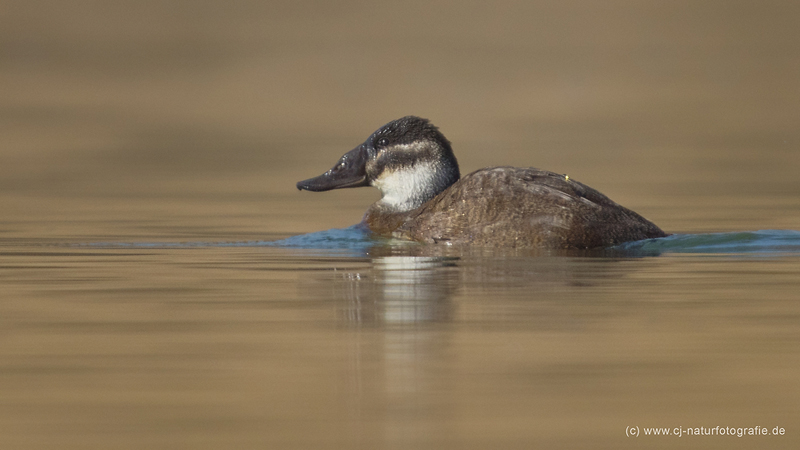 |
| © Christoph Jansch |
White-headed Ducks are becoming more and more regular vagrants in Germany. Just a few years ago, the German list committee was still convinced these birds had to be escaped birds from aviculturists. Now, it's becoming obvious that White-headed Duck is indeed very capable of reaching Germany on its own. Somewhat surprisingly, most of them seem to turn up in winter. The bird that was already featured last year stayed from December 16th to February 23rd on several water reservoirs near Landshut in Bavaria, then shortly disappeared and was refound near Ingolstadt on February 27th. What was very likely the same bird then reappeared on Quecksee in Tübingen from March 3rd to 26th. Along its journey through southern Germany it made lots of birders and twitchers very happy. Let's hope it found it's way back to its Mediterranean breeding grounds.
Purple Swamphen (Porphyrio porphyrio)
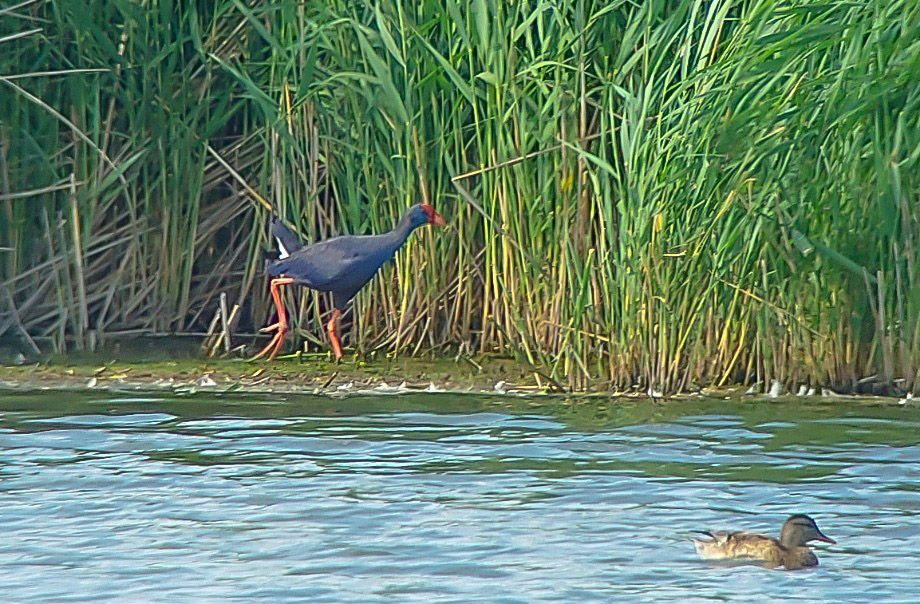 |
| © Friedemann Arndt |
There is only a single modern day record of Purple Swamphen from Germany, from when an adult was observed in late August in Bremen. Details of that record as well as for the historical records (winter 1788 in Melchingen and November 1862 in Segeberg) are rather vague. When news broke in mid-August of a Purple Swamphen at nature reserve "Der Spieß" near Worms many twitchers hurried to Rhineland-Palatinate. The bird stayed from August 12th to 23rd, but being a secretive rail wasn't easy to observe. The species is in currently categories B and D in Germany (whereas Grey-headed Swamphen is somehow in A?!), but since this birds' appearance coincides with a strong range expansion in recent years, I think it's safe to assume this record will make the grade and be accepted as a genuine vagrant.
Dwarf Cormorant (Microcarbo pygmaeus)
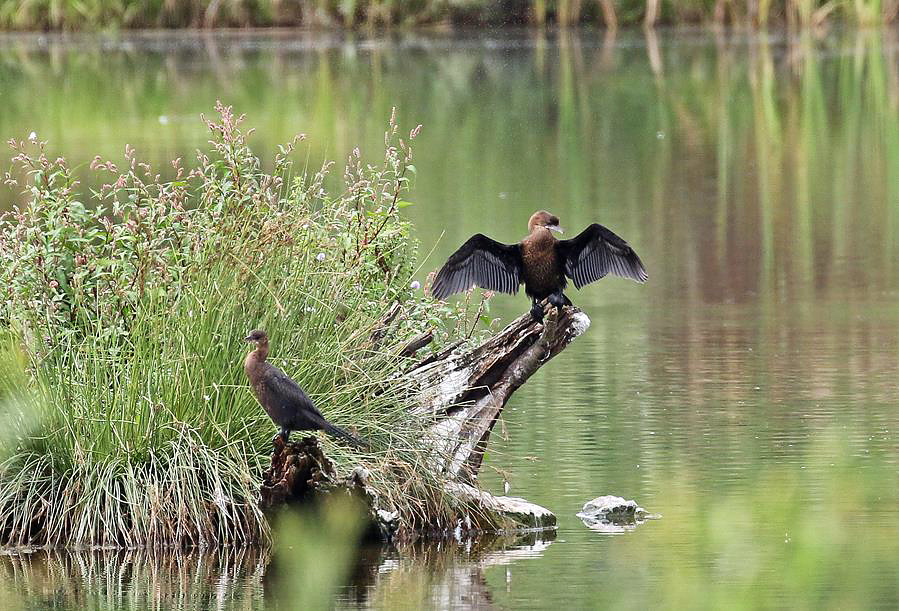 |
| © Arne Torkler |
Dwarf Cormorants are not particularly rare anymore in Germany. Since 2000 there have been approximately 80 records all over Germany, involving one or two birds each (interestingly there seem to be almost no records in the thirty years before!). But from August onwards an unprecedented influx took place coming from the southeast and bringing hundreds of birds to most states, some in groups of several dozens. This was likely a result of severe droughts in south-eastern Europe. Many of the birds stayed for weeks or even months and some are still around over eight months later. It will be quite the task for the rarities committees to calculate the total number of individuals involved, but it's already safe to claim that this was one of the most impressive influxes of any species ever to Germany!
Long-billed Dowitcher (Limnodromus scolopaceus)
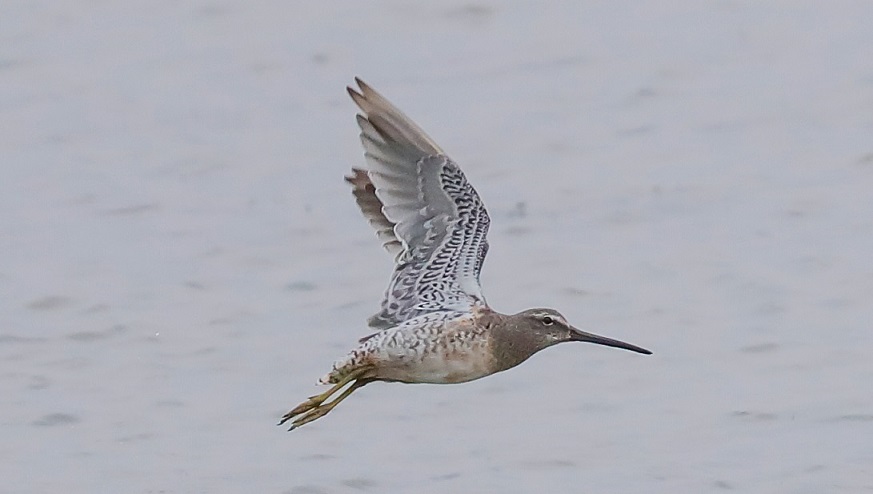 |
| © Thomas Hanel |
In the last 20 years only three Long-billed Dowitchers were recorded in Germany. Logically, interest was huge when one turned up on April 23rd at Katinger Watt in North Frisia. Some lucky birders managed to connect with it the next morning before, unfortunately, it disappeared. Two months later (27.06.) another one turned up just a few kilometers north. This time no hurry was needed as the bird would stay for over four months (until 03.11.). To make matters even more interesting two more birds would show up at the same site and another one on Borkum (19.-20.08). Finally, a bird was seen at the sewage ponds in Münster in mid-December (16.-18.12). If only all birds would cooperate so much with us birders...
Spotted Sandpiper (Actitis macularia)
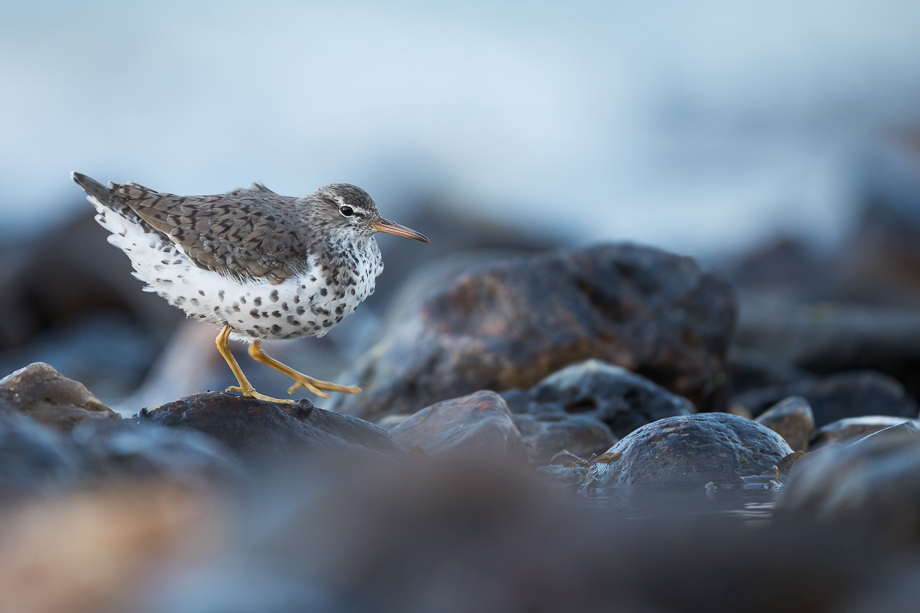 |
| © Ralph Martin |
I've counted 16 previous modern day records of Spotted Sandpiper, yet only few birders had ever seen one in Germany, mainly because either the birds were in inaccessible locations or stayed only very shortly. The bird that was found on February 11th near Kiel was in stark contrast to these previous records. Not only would it approach the birders to within arms length but it also stayed several months until May 1st, allowing for close-up studies of the name-giving spots that would appear one after the other over its extended stay.
Lesser Yellowlegs (Tringa flavipes)
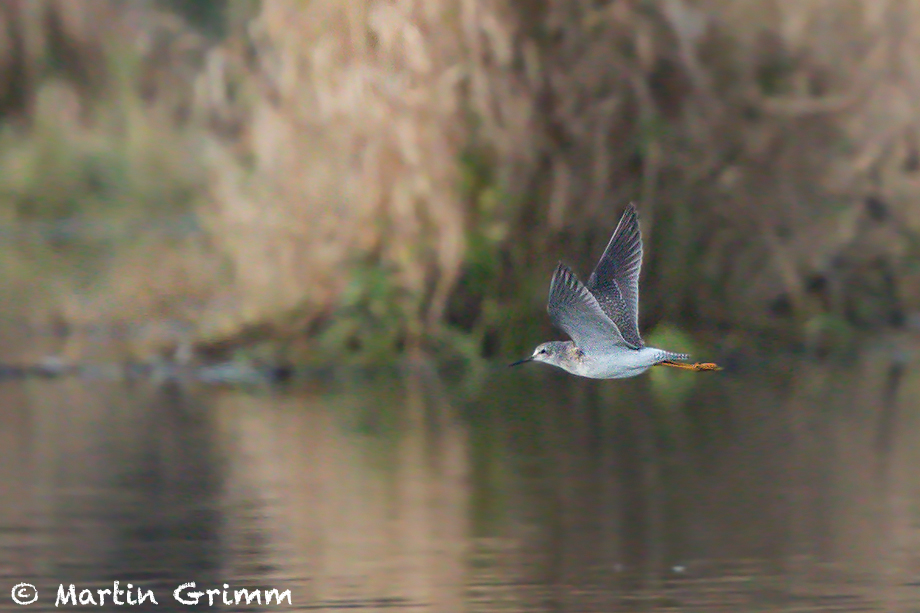 |
| © Martin Grimm |
Unlike the previous two american waders, this handsome bird turned up in southern Germany. To be more precise it showed for over a month (16.11.-19.12.) in the Saalbachniederung. It's about the 20th record for Germany, but once again one of the very cooperating kind.
Baird's Sandpiper (Calidris bairdii)
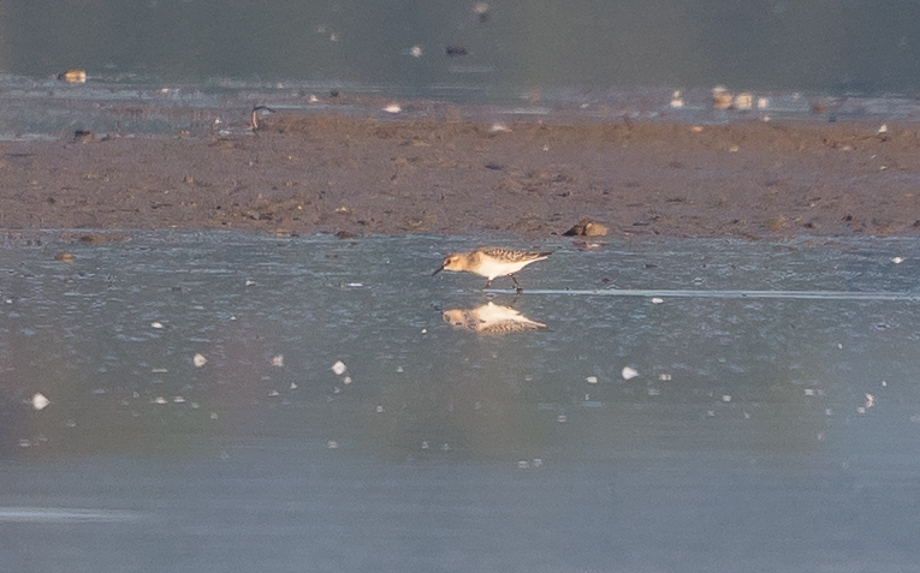 |
| © Oliver Käseberg |
There are 10 previous records (though two have never been formally published) of Baird's Sandpiper in Germany. An eleventh bird turned up in 2021, seven years after the last one. The juvenile stayed from September 2nd to 4th at Illerstausee Kardorf in Bavaria in direct comparison with some Little Stint, allowing for studies of the differences in structure, though unfortunately quite far away most of the time.
Oriental Pratincole (Glareola maldivarum)
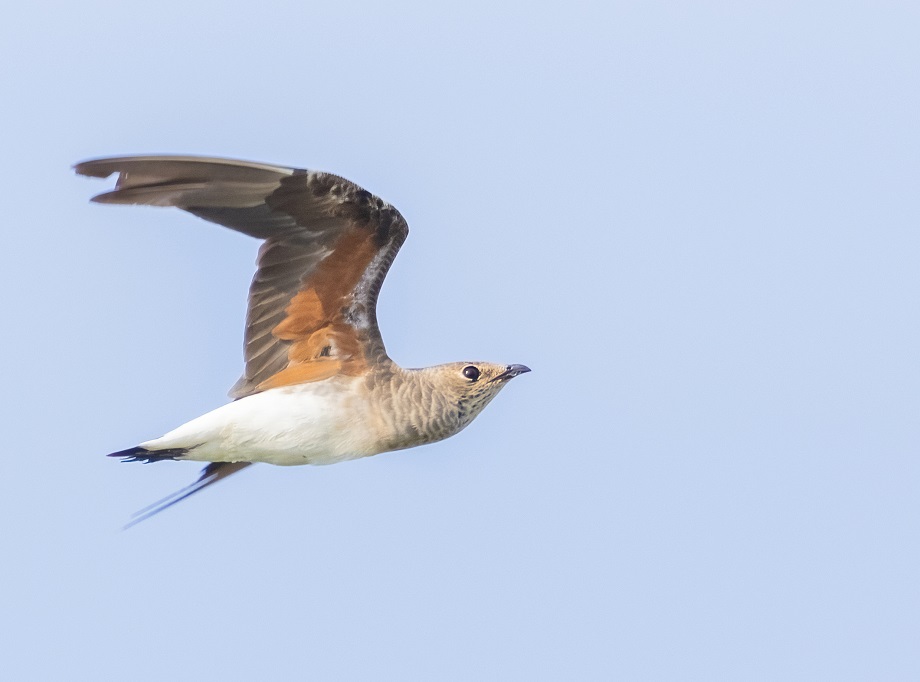 |
| © Jannik Jansons |
When an Oriental Pratincole turned up in early July just north of the Danish border all the German twitchers hoped it might just briefly cross the border. They hurried up to Margarethekoog in Denmark and waited for it to fly a little to the south, but for the time being the bird was just satisfied in Denmark. Two weeks later (16.07.) and yet another month later (16.08) an unidentified Pratincole was observed at Hauke-Haien-Koog, very likely the Danish bird. Five days later (21.08.) the roost of the bird was finally found and hundreds of birders managed to observe this first for Germany, which stayed for another 2,5 weeks, before finally returning to Denmark.
Yellow-billed Kite (Milvus aegyptius)
 |
| © Viola Strassner |
This bird is surely one of the more unexpected and controversial records of 2021. A Yellow-billed Kite was first observed on April 11th and 12th in the Netherlands and sparked debate over whether this species could actually reach central Europe on its own wings or if it perhaps had escaped from captivity, as rumour had it perhaps in the UK. Three days later the bird was refound on the German wadden sea island Wangerooge, where Covid restrictions made it basically impossible to twitch it. It stayed one more night, before never being seen again. What's your opinion on this African bird?
Northern Hawk-Owl (Surnia ulula)
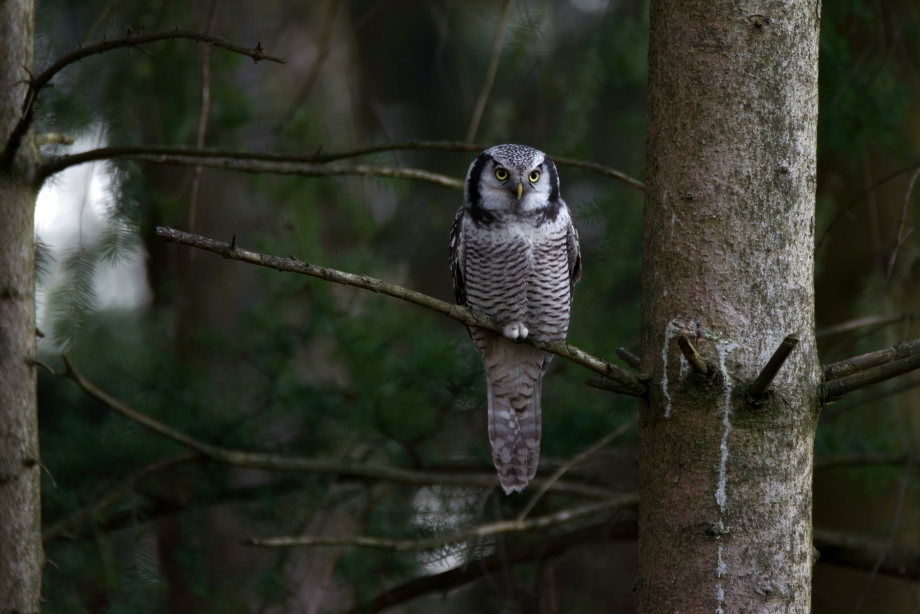 |
| © Lennart Haak |
Northern Hawk-Owl surely is one of the dream birds of most birders. But if you missed the influx during the 2013/2014 winter, which brought about a dozen owls to Germany, the chances of observing one in Germany were very slim during the last 15 years. Then, on October 24th one turned up near Bielefeld and those who twitched it on the same day were rewarded with stunning views. Unfortunately, the bird was gone by next morning, but during the one day it was twitchable it pleased about two dozen observers.
Pacific Swift (Apus pacificus)
 |
| © Jonas Baudson |
Swifts are notoriously difficult to twitch and this years' Pacific Swift is no exception. There is only one previous record from the inaccessible islet Mellum in 2014. The Greifswalder Oie is another such islet that is fairly difficult to reach. But since the bird disappeared after only a few minutes, that didn't really matter and only two observers managed to connect with this second record for Germany. At least they got us some great pictures of this neat looking bird.
Red-eyed Vireo (Vireo olivaceus)
 |
| © Meinolf Ottensmann |
This would have certainly been one of the strongest contenders for the title of best rarity in Germany, but it's secretive behaviour won't help. It only showed for about five minutes on September 26th before disappearing into the thick vegetation of Heligolands "middle land" ("Mittelland"), never to be found again. Given their rarity, American passerines are always a huge deal in Germany. There's only one previous record of Red-eyed Vireo in Germany from 1957 (also on Heligoland), but astonishingly a Yellow-throated Vireo has also turned up once before.
Isabelline Shrike (Lanius isabellinus) / Red-tailed Shrike (Lanius phoenicuroides)
 |
| © Oliver Käseberg |
Since distinguishing between Isabelline Shrike and Red-tailed Shrike can be near impossible in some cases, of 13 records of Isabelline Shrike in Germany, only six have been assigned to either taxon (5 isabellinus vs 1 phoenicuroides). Even though dozens of birders managed to connect with the handsome immature that was present on Heligoland on October 29th and some beautiful pictures have been shared on the web, I fear this one may be one of the unassignable birds. Nevertheless, I don't believe this will seriously diminish the joy of all those who saw it. By the way, another bird was seen six days before (23.10.) at Ahsewiesen in Northrhine-Westphalia, but unfortunately wasn't accessible to the public. Personally, I think both birds fit better for Isabelline than for Red-tailed Shrike. We'll see how the rarities committees will decide.
Iberian Yellow Wagtail (Motacilla flava iberiae)
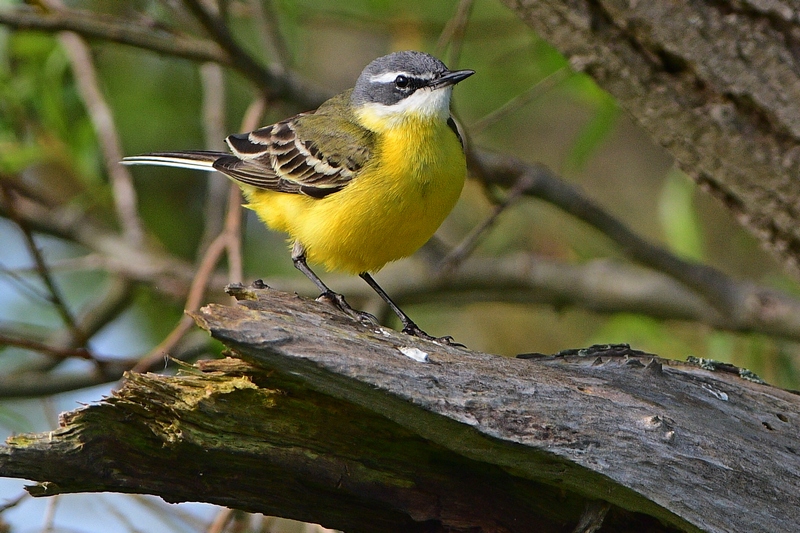 |
| © Martin Gottschling |
Every year five different Yellow Wagtail subspecies turn up in Germany. While sspp. flava and thunbergi are expected, sspp. flavissima, cinereocapilla and feldegg may be regarded as vagrants or at least as very rare migrants. 2021 added a new handsome, but difficult to confirm subspecies to the German list. An Iberian Yellow Wagtail showed beautifully for almost a month in the Huntemündung, where it likely bred together with a female flava.
Calandra Lark (Melanocorypha calandra)
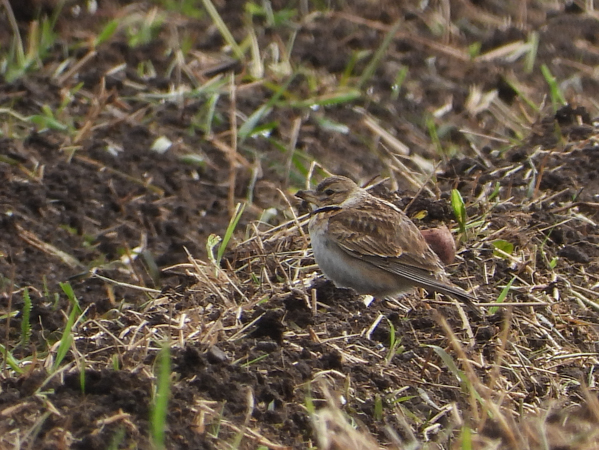 |
| © Holger Kirschner |
Calandra Lark has only been twitchable once before in Germany, with a total of just five records existing until 2021. This year saw two new records of this species. The one that showed up at Marktoberdorf in southwestern Bavaria on May 14th stayed another three days till May 17th though it was twitched only by handful of people (perhaps due to some lockdown situation?). Two weeks later, another one showed up at Neufelderkoog on the North Sea coast, which was only observed by the finders. Even though only few people connected with one of these underappreciated beauty with the hefty bill, it's still most definitely rare enough to be featured in this compilation.
Arctic Warbler (Phylloscopus borealis)
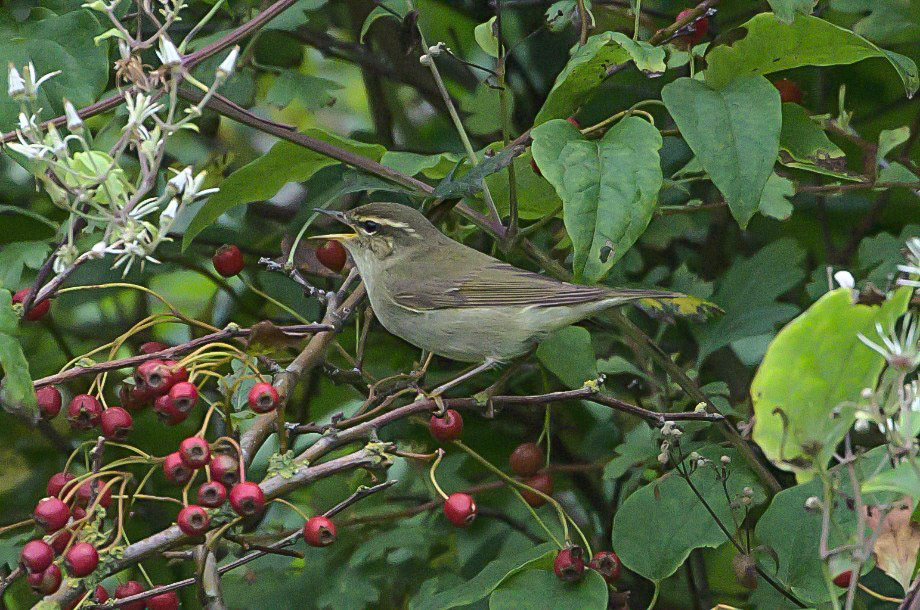 |
| © Friedemann Arndt |
In the late 1980s and 1990s this species seemed to become a somewhat regular vagrant to Germany, with eight birds appearing between 1989 and 1997. Then, the series broke off and in the following years only three more birds were found, of which only a single one was somewhat twitchable in 2017. So when a bird turned up on Heligoland on September 25th and stayed for another three days the chase was on for dozens of birders who were either already on the island or hopped on the ferry to twitch it. The bird played hide and seek with the observers, but I believe that in the end many were successful and left the island happy and with this one as a lifer.
Eastern Bonelli's Warbler (Phylloscopus orientalis)
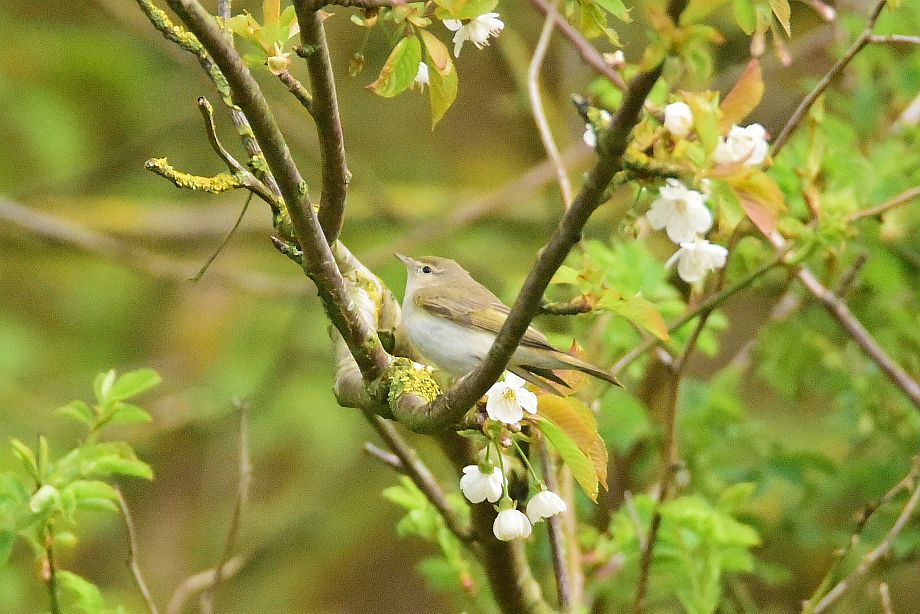 |
| © Paul Toschki |
Distinguishing the two Bonelli's Warblers is extremely challenging and requires either a bird in the hand or one that calls. Luckily, the bird that appeared on May 5th on Heligoland ticked both boxes. This first record for Germany called and sang conspicuously before flying into a mist net. After a few Bonelli's Warbler that could not safely be attributed to either the Western or Eastern taxon in the past, finally this neat species can be added to the German list.
Dusky Thrush (Turdus eunomus)
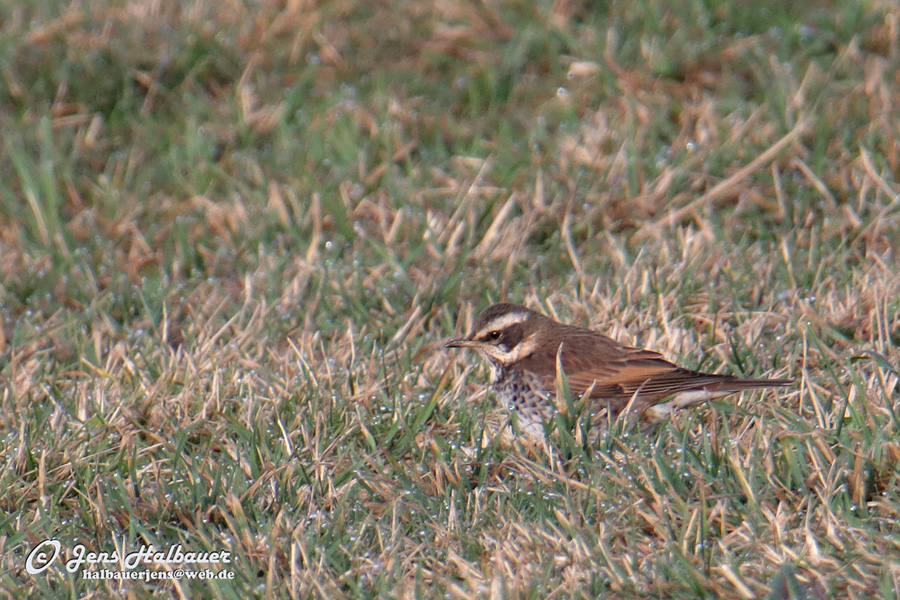 |
| © Jens Halbauer |
Even though Heligoland was graced with a Dusky Thrush in November 2017 that stayed for three days, only few twitchers managed to connect with that extremely skittish individual. Details about one previous modern day record (1996) and four historical records are mostly unknown to the public. On February 27th an individual of this Far Eastern beauty was found near Stollberg in Saxony, where twitchers got the chance to observe it for another week until March 8th, though refinding it was apparently not straight forward during those days. But I'm sure that the reward of refinding it must have added to the joy of observing this stunner.
Siberian Accentor (Prunella montanella)
 |
| © Sabine Cierpinsky |
Apart from the 2016 influx, Siberian Accentors are still a major rarity anywhere in Europe. During that influx at least nine birds reached Germany, but it wasn't easy to connect with any of them, so this new bird that turned up on December 2nd in a private garden in Oelsnitz (Saxony) would've likely become very popular if it had stayed a little longer. In my opinion, the blurry corresponding picture perfectly sums up the mythical character of this species.
Rustic Bunting (Emberiza rustica)
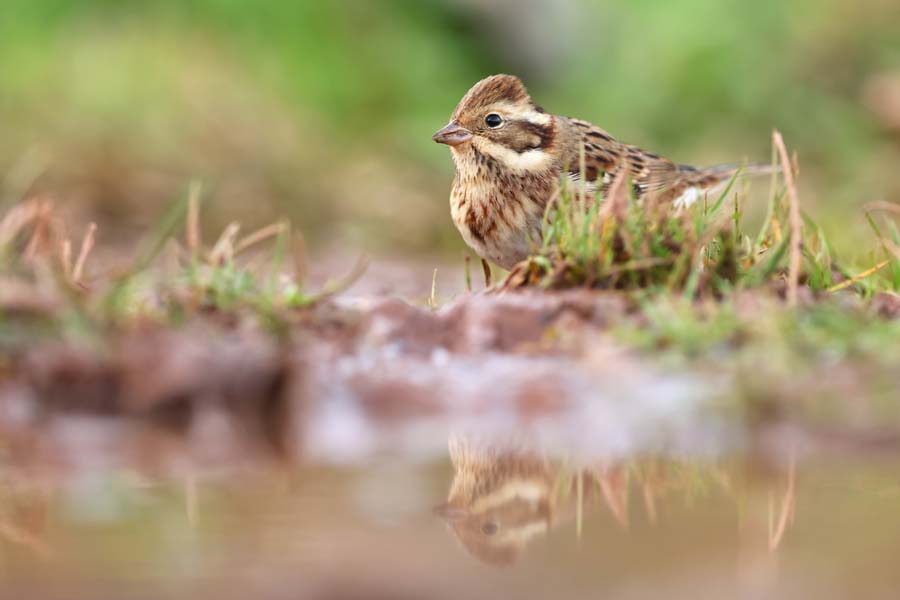 |
| © Volker Hesse |
Rustic Bunting is a species that wouldn't have normally made the grade for this poll, with ca. 70 modern day records it's just too common to have any chance of winning. But there are two factors that made me add it this time. First of all, it's just great to see that this species, which appeared to be declining rapidly in recent decades seems to be making a strong comeback (at least in Scandinavia), resulting in four German records this year (24.05. Heligoland, 19.09. Greifswalder Oie, 08.10.-14.10. Heligoland, 17.10.-20.10. Heligoland). Secondly, these years birds were incredibly tame and showed to hundreds of birders during peak season. It's guaranteed that as the crowd-pleasers they were this year, they'll have a decent shot at one of the top ranks.
Walrus (Odobenus rosmarus)
 |
| © Edgar Schonart |
I've decided to add one non-avian contender to this poll, since Walrus certainly fits the definition of being a vagrant. I'm aware of only six previous records in Germany with the oldest reaching back to 1615 and the most recent one in 1998. This chonky female that was likely also recorded in Denmark in February graced the islands of Wangerooge, Spiekeroog, Baltrum and Borkum with short visits between September 7th and 17th before continuing its vacation on several Dutch islands and finally returning north along the Northumberland coast of Britain. It's volatile island-hopping made it difficult to twitch, so it was mostly some lucky locals who managed to connect with it, but it was also fun to follow its adventures through the media coverage that it rightfully received.
Honorable mentions:
The poll already includes 21 possible candidates, but many more could have been added. Following, I will give a quick shout-out to some other species that could have been added to this poll if circumstances had been a little different. Some were featured in previous polls, others disappeared too quickly or were too shy to become crowd-pleasers. I really hope that the finders of these awesome rarities will forgive me for not including them here. I'll readily admit that purely from a rarity standpoint some of these would have deserved a place in the above poll more than others which I chose to include:
Lesser Scaup (Aythya affinis) 9.-10.5. Ismaninger Fischteiche
King Eider (Somateria spectabilis) 4.2. Elbe estuary, 11.-15.3. and 11.12-31.12. Rerik (up to two birds)
Black Scoter (Melanitta americana) 16.-17.1. and 29.-31.12. Geltinger Birk, 6.3. Bülk, possibly also 14.12. Schönberg
Balearic Shearwater (Puffinus mauretanicus) 17.8. Sylt, 23.9. Heligoland
Booted Eagle (Hieraaetus pennatus) 4.-8.4. Dahlem and 7 others
Bonelli's Eagle (Aquila fasciata) 31.5. Bingen/Rhine
Eastern Imperial Eagle (Aquila heliaca) 14.3.-24.11. Randowbruch, 29.4. Dähre
Lesser Kestrel (Falco naumanni) 15.5. Passau
White-tailed Lapwing (Vanellus leucurus) 5. & 13.8. Randowbruch
American Golden Plover (Pluvialis dominica) 3.5. Diepholz, 23.5. Günnemoor
Collared Pratincole (Glareola pratincola) 16.4. Reichenau, 9.5. Kirchhain, 11.-22.5. Günzburg, 31.5 & 4.6. Diepholz, 12.6. Böbingen a. d. Rems
Black-winged Pratincole (Glareola naumanni)
25.-28.7. & 4.8. & 15.8. Beltringharder Koog and surroundings, 26.7. Jade, 1.-2.8. Bremerhaven
Bonaparte's Gull (Chroicocephalus philadelphia) 11.7. Crildumersiel
Little Swift (Apus affinis) 22.6. Neustadt am Rübenberge
Moustached Warbler (Acrocephalus melanopogon) 27.-28.6. NSG "Der Spieß"/Worms
Eastern Olivaceous Warbler (Iduna pallida) 29.8. NSG Leyhörn
Sardinian Warbler (Sylvia melanocephala) 16.1. Freiburg im Breisgau, 19.5. Heligoland
Eastern Black-eared Wheatear (Oenanthe melanoleuca) 1.6. Heligoland
Western Black-eared Wheatear (Oenanthe hispanica) 24.5. Netzener Neue Wiesen
Black-throated Thrush (Turdus atrogularis) 15.11. Heligoland
Black-headed Bunting (Emberiza melanocephalus) 16.5. Großmölsen, 23.-27.5. Hofheim i. UFr., 2.6. Dassel